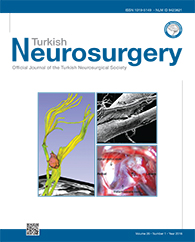MATERIAL and METHODS: The clinical data, pathological findings, surgical methods and surgical outcomes of 56 patients with secondary epilepsy from hippocampal lesions were retrospectively analyzed.
RESULTS: Postoperative pathological examinations confirmed that 27 patients had gliomas, 17 patients had vascular malformations and 12 patients had hippocampal sclerosis. Twenty-nine patients underwent selective resection of the lesioned tissue and the surrounding infiltrated tissue, and 26 patients underwent a more generous removal of the anterior temporal lobe, lesioned tissue, infiltrated tissue and medial structures of the temporal lobe. Fifty patients were followed up with an average follow-up duration of 25.5 months. At postoperative one year, the remission rate of epilepsy that achieved Engel grade I was 80.8% (21/26) and 83.3% (20/24) for the selective resection and more generous resection, respectively, indicating that the difference between the two methods was insignificant.
CONCLUSION: Microsurgery is the first choice for the treatment of secondary epilepsy from hippocampal lesions. Various operative routes and methods can be selected based on the lesion natures. Long-term favorable outcome of seizure control following microsurgery can be achieved in most of the patients.
Keywords : Epilepsy, Hippocampus, Microsurgery




